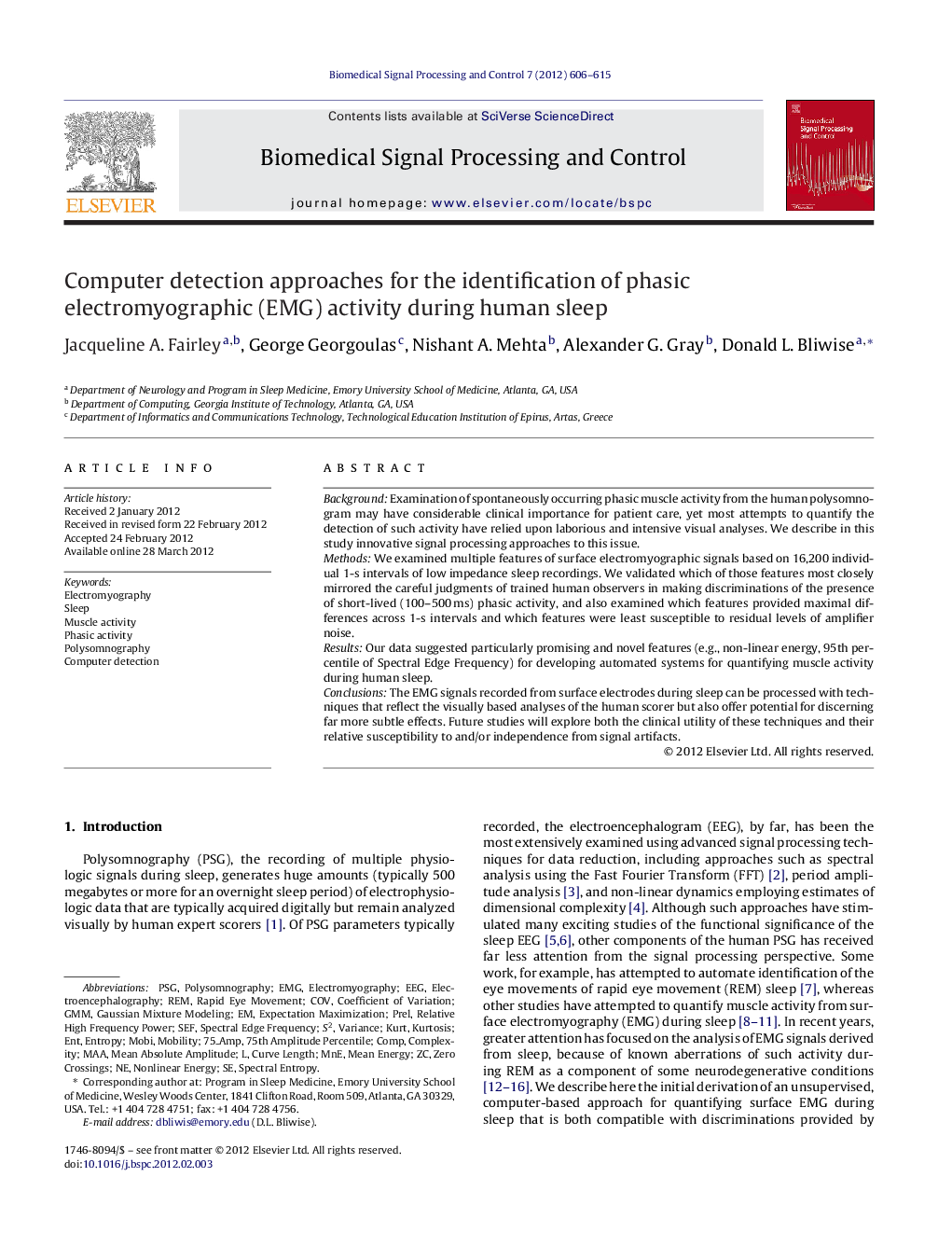| Article ID | Journal | Published Year | Pages | File Type |
|---|---|---|---|---|
| 557606 | Biomedical Signal Processing and Control | 2012 | 10 Pages |
BackgroundExamination of spontaneously occurring phasic muscle activity from the human polysomnogram may have considerable clinical importance for patient care, yet most attempts to quantify the detection of such activity have relied upon laborious and intensive visual analyses. We describe in this study innovative signal processing approaches to this issue.MethodsWe examined multiple features of surface electromyographic signals based on 16,200 individual 1-s intervals of low impedance sleep recordings. We validated which of those features most closely mirrored the careful judgments of trained human observers in making discriminations of the presence of short-lived (100–500 ms) phasic activity, and also examined which features provided maximal differences across 1-s intervals and which features were least susceptible to residual levels of amplifier noise.ResultsOur data suggested particularly promising and novel features (e.g., non-linear energy, 95th percentile of Spectral Edge Frequency) for developing automated systems for quantifying muscle activity during human sleep.ConclusionsThe EMG signals recorded from surface electrodes during sleep can be processed with techniques that reflect the visually based analyses of the human scorer but also offer potential for discerning far more subtle effects. Future studies will explore both the clinical utility of these techniques and their relative susceptibility to and/or independence from signal artifacts.
► Surface recordings of phasic EMG in sleep may be prognostic for neurodegeneration. ► Most attempts to quantify such activity have relied upon visual judgments. ► We describe computer-derived, digitally based features for quantifying EMG in sleep. ► Features reflect human scorers but discriminate beyond visually based approaches. ► Several unique signal processing features are promising for future studies.
